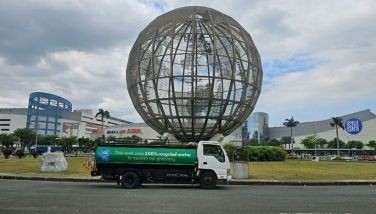It’s time for the ‘People’s car’

October 4, 2003 | 12:00am
Remember the "people’s car"? One of the main stumbling blocks to the program, as claimed then by the proponents, was the 15-percent excise tax. With Republic Act 9224 reducing the said tax to a mere two percent, the "people’s car" would now be a very affordable alternative to the middle-income earners who have been aspiring to own brand new vehicles.
Recalling, in 1987, the newly installed government of Madame Corazon Aquino created the CDP or the Car Development Program, which limited the participants to just three companies, namely; Toyota, Nissan and Mitsubishi. The exclusivity was mainly due to the existence of a small market then.
However, an unexpected demand for vehicles surged presumably precipitated by the prevailing political euphoria of the era and the promise of an improved economic climate that resulted in long waiting lines and increased prices of vehicles. Due to the surprising scenario a proposal for a "People’s Car Program" was initiated by Ms. Elena Lim and as a result the Aquino government amended the CDP to include the People’s Car Program in 1990.
Out of several proponents, the accepted carmakers for the program were Kia, Honda, Fiat and Nissan – Honda with the Civic 3-door, Kia with the 5-door Pride, Fiat with the 5-door Uno and Nissan with its March.
A provision of the People’s Car Program called for a price cap at which it can be sold to customers. Initially, it was pegged at P175,000 but was eventually increased to P236,000 and then to P300,000. The escalation was due to increasing production costs and exchange rates.
I am not aware of any legislation or executive order that has in effect scrapped the People’s Car Program. As a matter of fact I am aware that some car companies have been allowed to set up manufacturing in the country and equally enjoy incentives along with the rest due to their promise to be involved in the said program and provide affordable vehicles for the populace.
As we find ourselves still wallowing waist deep in this present financial quagmire – it’s time for the "people’s car"!
I received one of the letters sent by Caltex executive Steven Mulvaney announcing the closure of their Batangas refinery and its conversion into an import terminal.
The letter started on a positive note by heralding the investment of P750 million for the said conversion, "as part of the company’s long term strategy to stay competitive, strengthen the Caltex brand, enhance market presence and build on its 86-year heritage in the Philippines."
What this shift means is that a lot of jobs will be lost as Caltex switches to a 100-percent product import strategy. No more refinery operations for Caltex in the Philippines as they found a huge excess of refining capacity – 1.2 million barrels of finished products a day in the Asia Pacific and Middle East. Imported products from much larger and more modern refineries that cost less than having to manufacture them here.
Another reason cited in the letter behind the bold Caltex decision to mothball its refinery was that, "Caltex’s 50-year old refinery is too small and lacks the economies of scale to stay competitive. Also, its technology is dated and it is not economic to make further significant investments to upgrade the plant. In short, the refinery has reached the end of its economic useful life."
Some business observers see this decision of Caltex with apprehension as it may be a reflection of what many big multinationals think are the business prospects in the country at the moment – "no more good money after bad."
Many would take Caltex’s decision as it is presented, however there will always be a lot who would consider this major move as a set back for the country’s business brought about by present political misadventures.
Mabuhay!!! Be proud to be a Filipno.
For comments: (e-mail) HYPERLINK " business/leisure-star@sunshine-tv.com"
Recalling, in 1987, the newly installed government of Madame Corazon Aquino created the CDP or the Car Development Program, which limited the participants to just three companies, namely; Toyota, Nissan and Mitsubishi. The exclusivity was mainly due to the existence of a small market then.
However, an unexpected demand for vehicles surged presumably precipitated by the prevailing political euphoria of the era and the promise of an improved economic climate that resulted in long waiting lines and increased prices of vehicles. Due to the surprising scenario a proposal for a "People’s Car Program" was initiated by Ms. Elena Lim and as a result the Aquino government amended the CDP to include the People’s Car Program in 1990.
Out of several proponents, the accepted carmakers for the program were Kia, Honda, Fiat and Nissan – Honda with the Civic 3-door, Kia with the 5-door Pride, Fiat with the 5-door Uno and Nissan with its March.
A provision of the People’s Car Program called for a price cap at which it can be sold to customers. Initially, it was pegged at P175,000 but was eventually increased to P236,000 and then to P300,000. The escalation was due to increasing production costs and exchange rates.
I am not aware of any legislation or executive order that has in effect scrapped the People’s Car Program. As a matter of fact I am aware that some car companies have been allowed to set up manufacturing in the country and equally enjoy incentives along with the rest due to their promise to be involved in the said program and provide affordable vehicles for the populace.
As we find ourselves still wallowing waist deep in this present financial quagmire – it’s time for the "people’s car"!
The letter started on a positive note by heralding the investment of P750 million for the said conversion, "as part of the company’s long term strategy to stay competitive, strengthen the Caltex brand, enhance market presence and build on its 86-year heritage in the Philippines."
What this shift means is that a lot of jobs will be lost as Caltex switches to a 100-percent product import strategy. No more refinery operations for Caltex in the Philippines as they found a huge excess of refining capacity – 1.2 million barrels of finished products a day in the Asia Pacific and Middle East. Imported products from much larger and more modern refineries that cost less than having to manufacture them here.
Another reason cited in the letter behind the bold Caltex decision to mothball its refinery was that, "Caltex’s 50-year old refinery is too small and lacks the economies of scale to stay competitive. Also, its technology is dated and it is not economic to make further significant investments to upgrade the plant. In short, the refinery has reached the end of its economic useful life."
Some business observers see this decision of Caltex with apprehension as it may be a reflection of what many big multinationals think are the business prospects in the country at the moment – "no more good money after bad."
Many would take Caltex’s decision as it is presented, however there will always be a lot who would consider this major move as a set back for the country’s business brought about by present political misadventures.
Mabuhay!!! Be proud to be a Filipno.
For comments: (e-mail) HYPERLINK " business/leisure-star@sunshine-tv.com"
BrandSpace Articles
<
>
- Latest
- Trending
Trending
Latest




























